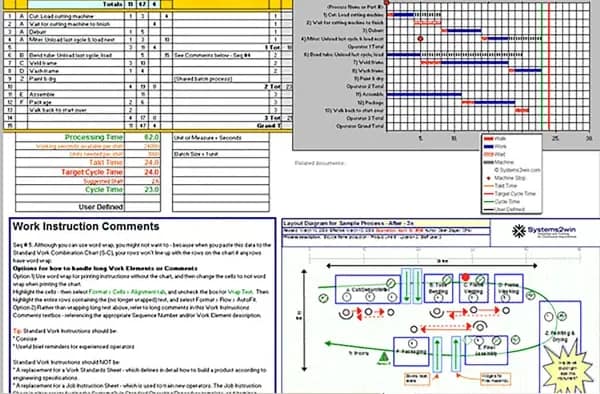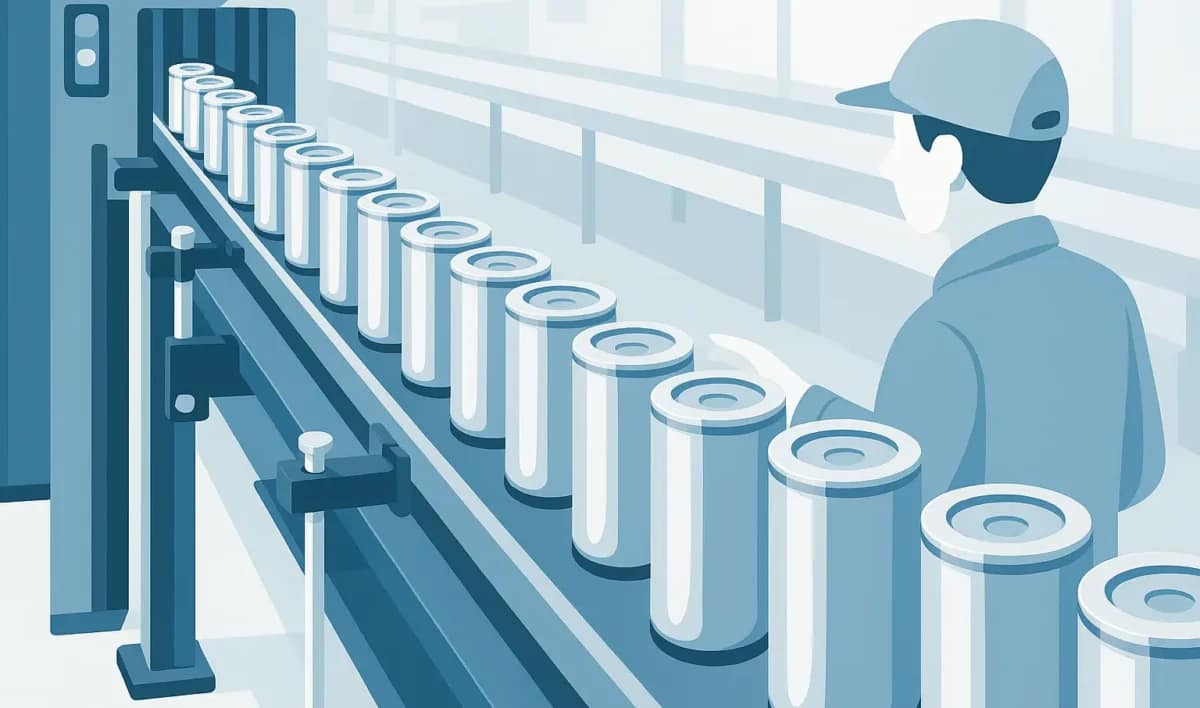
Standardized Work in Automotive Manufacturing
🚗 Introduction
Standardized Work is the foundation of operational excellence in automotive manufacturing. It ensures that every task is performed using the best current method, aligned with customer demand, and executed with minimal waste.
This guide integrates OEM expectations, industry standards (AIAG, VDA), and IATF 16949 to help suppliers build a repeatable, auditable, and continuously improving work system.
🎯 Purpose
To establish repeatable, predictable baselines for continuous improvement using:
- Standardized Work Combination Tables
- Standardized Work Sheets
- Job Element Sheets (JES)
- Time Recording Sheets
- Production Capacity Sheets
- Balance Charts
📌 Scope
This standard applies to all manufacturing and assembly sites, including:
- Production operations
- Rework and repair areas
- Quality gates and labs
- Gauging stations
- Material handling and delivery
👥 Roles & Responsibilities
| Activity | Responsible | Support |
|---|---|---|
| Infrastructure & resources | General Manager | — |
| Implementation | General Manager | Global Strategy, CAPEX, Quality |
| Create SW documents | Team Leader, Supervisor | Manufacturing Engineering |
| Create JES & Capacity Sheets | Manufacturing Engineer | Supervisor, Quality Engineer |
| Operator training | Supervisor | Manufacturing & Quality Engineers |
| Audit & update SW | Supervisor | Team Members, Engineers |
✅ Core Requirements
📄 Documentation & Training
- A documented Standardized Work procedure must exist
- Employees must be trained, with records maintained
🧱 Required Documents
- Standardized Work Combination Table
Combines human and machine movement to define work within takt time - Standardized Work Sheet
Details operator motion, process sequence, quality checkpoints, and safety - Job Element Sheet (JES)
Describes WHAT, HOW, and WHY of each job element with visuals and rationale - Balance Chart
Visualizes workload distribution across processes - Time Recording Sheet & Time Fluctuation Sheet
Tracks cycle time variation and helps reduce fluctuation - Production Capacity Sheet
Includes tool change calculations and capacity planning
⏱ Takt Time & Line Balancing
- Takt Time = Net Available Time / Customer Demand
- Line balancing ensures workload leveling across processes
- If multiple machines are used, multiply takt time accordingly
🔁 Continuous Improvement & Escalation
- SW must be audited regularly using the Audit Template
- Operators are empowered to stop work if SW cannot be followed
- An escalation process must allow supervisors to respond within takt time
📌 Posting & Accessibility
- SW documents must be posted at the job site
- Must be visible but not obstructive
- Allows observation of operator’s work sequence
SW is a management tool to:
- Observe operations
- Identify deviations
- Capture improvements
🌐 Integration with Global Standards
✅ GM & Ford Requirements
- GM: Requires JES and SW documentation for launch readiness, CQI-8, and SCCAF
- Ford: Emphasizes operator training, visual work instructions, and Q1 audit compliance
✅ AIAG & VDA
- AIAG: SW supports APQP, Control Plan, and FMEA linkage
- VDA 6.3: Requires documented work instructions, process audits, and operator involvement
✅ IATF 16949
Requires:
- Documented and maintained work instructions
- Operator competency and training
- Process control and verification
- Continuous improvement and audit traceability
🗂 Record Keeping
Maintain records per local plant procedures, including:
- SW documents
- Audit results
- Training records
- Revision history
📖 Definitions
| Term | Definition |
|---|---|
| Takt Time | Time to produce one unit based on customer demand |
| Periodic Work | Non-cyclical tasks like gauging or box return |
| Fluctuation | Variation in cycle time for a job element |
| JES | Describes job actions, rationale, visuals, and revisions |
| SW Combination Table | Graphical breakdown of manual and machine work |
| Line Balancing | Leveling workload to remove bottlenecks and waste |
✅ Summary
Implementing Standardized Work helps suppliers:
- Ensure consistency and repeatability
- Empower operators and improve training
- Drive continuous improvement and waste reduction
- Meet global OEM and industry standards
📌 Beginner Tip: Think of Standardized Work as your “playbook for quality”—it defines the best way to do the job today and helps you improve it tomorrow.


